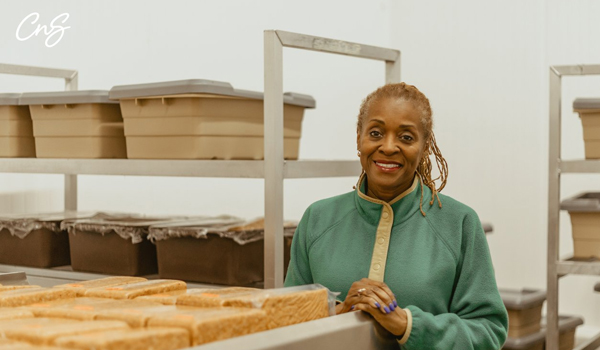What is Headcheese Made Of? 8 Common Ingredients

Glorious Malone’s award-winning headcheese showcases the finest regional ingredients. Headcheese may have a mysterious name, but its ingredients are usually humble. Recipes vary by region but traditional headcheese, also known as souse meat, generally contains a combination of 8 common ingredients.
The 8 Basic Headcheese Ingredients
- Pig's Head: The primary ingredient is usually the head of a pig, including the cheeks, ears and sometimes other parts like the tongue.
- Seasonings: Southern-style headcheese is seasoned with a mix of spices and herbs. Common seasonings include salt, black pepper and garlic.
- Aromatic Herbs: Ingredients like bay leaves and thyme are often added to infuse the meat with aromatic flavors.
- Vinegar: Some recipes incorporate white vinegar or apple cider vinegar to provide a tangy element to the dish.
- Onions: Chopped onions can be used to add flavor and depth to the headcheese.
- Additional Spices: Depending on regional variations, you may find other spices like allspice, red pepper flakes or even juniper berries in some recipes.
- Gelatin Formation: The natural gelatin extracted from simmering the head is a key component, giving the headcheese its characteristic firm yet slightly gelatinous texture.
- Optional Ingredients: Depending on personal preferences and regional traditions, other optional ingredients may include mustard, hot sauce or even pickled red beet juice to impart sweetness.
Is Headcheese Made From Brains?
No. Despite the unappealing name, traditional headcheese today is not actually made from animal brains.
The name "headcheese" originated centuries ago when the dish was made using various animal head meat like brains, tongues and other trimmings boiled in broth. However, modern commercial production of souse meat now utilizes more appetizing cuts of meat. Brains are typically no longer incorporated due to costs and unfavorable texture. Quality headcheese relies on tender cuts of fatty pork, chicken or beef for the best consistency and flavor. While the traditional name remains, you can rest assured authentic headcheese from skilled producers does not contain any brains, just tasty, seasoned meat gelatin.
A Journey Through Headcheese's Ingredient History
Traditional headcheese-making in the past was a resourceful practice, utilizing every part of an animal's head, often from pigs. It relied on slow simmering, extracting natural gelatin for a characteristic, slightly gelatinous texture. Basic seasonings like salt, black pepper and garlic enhanced the flavors, while some recipes incorporated aromatic herbs. After simmering, the meats were painstakingly separated from bones and undesirable parts.
Today, souse meat making has evolved. While animal heads remain central, modern recipes may include additional meats, commercial gelatin and a wider range of seasonings. Safety regulations have improved meat handling and innovative chefs explore diverse ingredients and presentation styles, resulting in a broader range of headcheese variations catering to contemporary tastes.
Headcheese in Other Cultures
While the process of crafting souse meat is similar globally, the specific meats, seasonings and techniques used vary by region, resulting in distinct versions. In Europe, pork, veal or beef prevail based on locality. Asian styles favor poultry in broths using soy sauce, sesame, ginger and five spices. Mexico's cilantro-flavored cabeza de res contains beef. American South renditions utilize fiery peppers and stewed pork. These customized ingredients create unique flavor profiles representing local culture and cuisine. Productions also differ in grind, aging methods and additions like wine. Regional ingenuity keeps traditional headcheese continually evolving across cultures.
